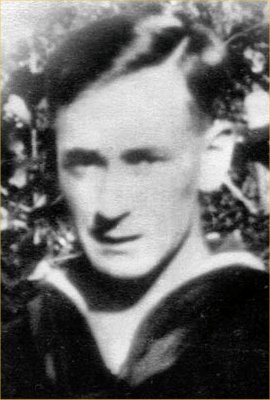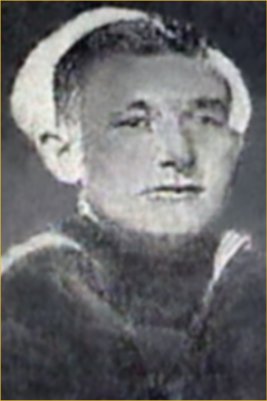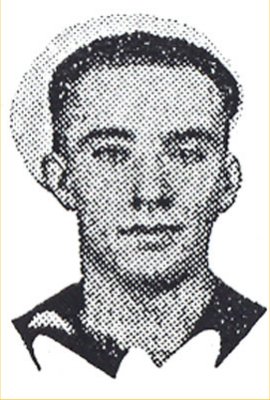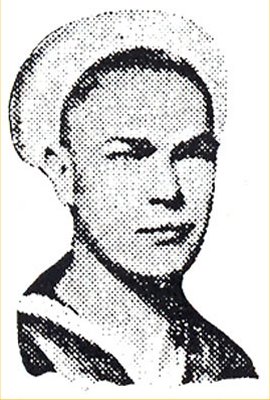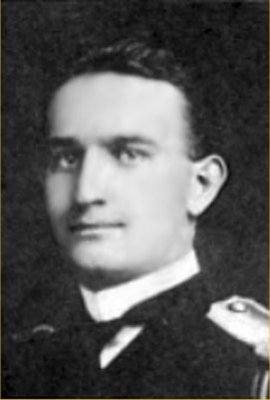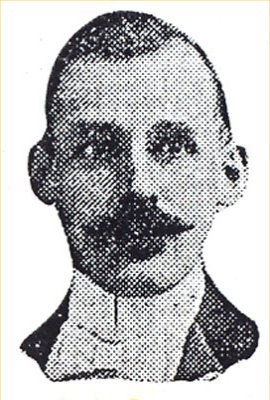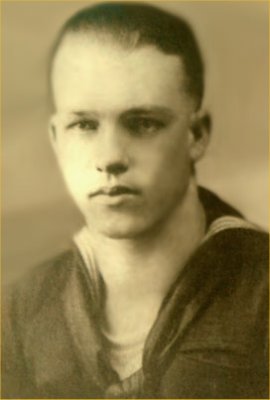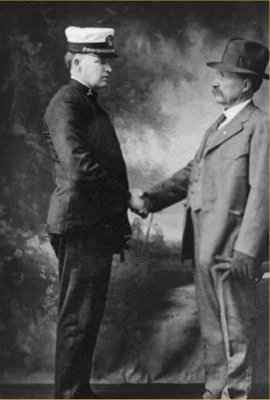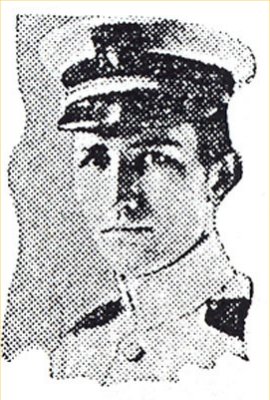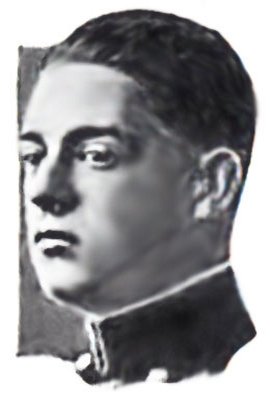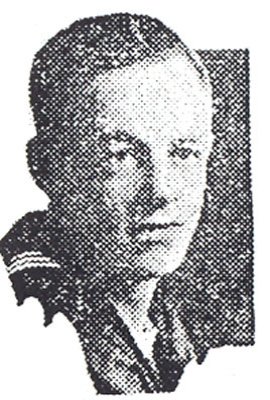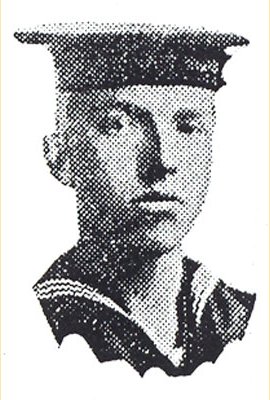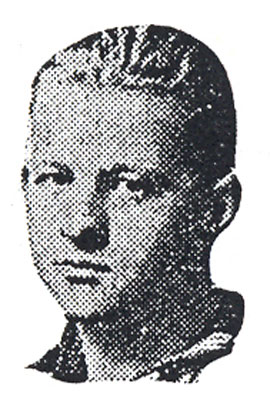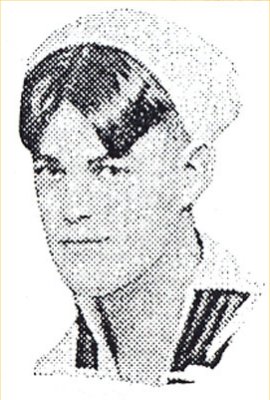S-4 salvage: Difference between revisions
Pbcjohnston (talk | contribs) (Added captions) |
Pbcjohnston (talk | contribs) (Added captions) |
||
| Line 2: | Line 2: | ||
[[File:S-4 pontoons 1.jpg|left|500px]] | [[File:S-4 pontoons 1.jpg|left|500px]] | ||
<div style="text-align: justify;"><span style="color:#00008B">This photo was taken at approximately 3:30 pm on March 17, 1928, shortly after the salvage force successfully raised the S-4 from the bottom of Cape Cod Bay off Provincetown, MA. The six salvage pontoons that are supporting the S-4's wreck can be seen, and in the middle is the sub's conning tower fairwater. The ship on the left is the submarine rescue vessel USS Falcon (ASR-2), the lead salvage ship of the force. She is connected to the S-4 and the pontoons via towing chains and air hoses. Compressed air had to be continuously pumped to the pontoons in order to keep them fully buoyant. The Falcon trailed the S-4 all the way back to Boston. | <div style="text-align: justify;"><span style="color:#00008B">This photo was taken at approximately 3:30 pm on March 17, 1928, shortly after the salvage force successfully raised the S-4 from the bottom of Cape Cod Bay off Provincetown, MA. The six salvage pontoons that are supporting the S-4's wreck can be seen, and in the middle is the sub's conning tower fairwater. The ship on the left is the submarine rescue vessel USS Falcon (ASR-2), the lead salvage ship of the force. She is connected to the S-4 and the pontoons via towing chains and air hoses. Compressed air had to be continuously pumped to the pontoons in order to keep them fully buoyant. The Falcon trailed the S-4 all the way back to Boston. | ||
The salvage operation went remarkably well, all things considered. The Navy had learned a lot about open ocean salvage during the [[Notable Submarine Accidents|'''S-51 operation''']] two years prior. Those lessons greatly sped the S-4 operation, and she was off the bottom in a little over three months, as opposed to the 9½ months for the S-51. | |||
<small>U.S. Navy photo.</small> | <small>U.S. Navy photo.</small> | ||
| Line 9: | Line 11: | ||
[[File:S-4 pontoons 2.jpg|left|500px]] | [[File:S-4 pontoons 2.jpg|left|500px]] | ||
<div style="text-align: justify;"><span style="color:#00008B">The S-4 under tow to the Boston Navy Yard in Charlestown, MA. on the morning of March 18, 1928. They are in Boston's | <div style="text-align: justify;"><span style="color:#00008B">The S-4 under tow to the Boston Navy Yard in Charlestown, MA. on the morning of March 18, 1928. They are in Boston's Inner Harbor at this point, with Haymarket and the North End in view in the background. The fleet tugs USS Wandank (AT-26) and Sagamore (AT-20) are in the lead. The two smaller tugs are not identified. | ||
<small>U.S. Navy photo.</small> | <small>U.S. Navy photo.</small> | ||
| Line 16: | Line 18: | ||
[[File:S-4 pontoons 3.jpg|left|500px]] | [[File:S-4 pontoons 3.jpg|left|500px]] | ||
<div style="text-align: justify;"><span style="color:#00008B"> | <div style="text-align: justify;"><span style="color:#00008B">The top of S-4's conning tower fairwater as she hung from the pontoons, March 18, 1928. Visible are the bridge, the periscope shears, a pipe frame lookout stand at the top of the shears, and both periscopes. A national ensign has been raised on a makeshift flagstaff braced to the shears. This photo was taken in Boston's Inner Harbor, just off the Navy Yard in Charlestown. | ||
<small> | <small>U.S. Navy photo.</small> | ||
[[File:Red bar sub new.jpg]] | [[File:Red bar sub new.jpg]] | ||
[[File:S-4 dd 1.jpg|left|500px]] | [[File:S-4 dd 1.jpg|left|500px]] | ||
<div style="text-align: justify;"><span style="color:#00008B"> | <div style="text-align: justify;"><span style="color:#00008B">In this photo, S-4 has been placed on the blocks inside the drydock at the Boston Navy Yard in Charlestown, MA. The date is March 18, 1928. The boat has been rolled upright and braced to the dock sidewall by divers. The pumping of the dock has not yet begun. One of the pontoons can be seen on the far right. | ||
<small> | <small>U.S. Navy photo.</small> | ||
[[File:Red bar sub new.jpg]] | [[File:Red bar sub new.jpg]] | ||
[[File:S-4 dd 2.jpg|left|500px]] | [[File:S-4 dd 2.jpg|left|500px]] | ||
<div style="text-align: justify;"><span style="color:#00008B"> | <div style="text-align: justify;"><span style="color:#00008B">A long view of the S-4 and her pontoons in drydock at Charlestown. This photo was taken from a crane at the caisson end of the drydock. All of the pontoons used are in view, and they are still in their towing positions. At this point, divers are in the water from the various small boats milling about the dock. They are checking to make sure that the S-4 is resting squarely on the blocks and that none of them shifted while the boat was being rolled to an even keel. Once these inspections are complete, the pumping of the dock will resume. The dock workers have installed two long braces to either side of the conning tower fairwater. These will ensure that the boat does not roll as the water is pumped out. | ||
<small> | <small>U.S. Navy photo.</small> | ||
[[File:Red bar sub new.jpg]] | [[File:Red bar sub new.jpg]] | ||
[[File:S-4 dd 3.jpg|left|500px]] | [[File:S-4 dd 3.jpg|left|500px]] | ||
<div style="text-align: justify;"><span style="color:#00008B"> | <div style="text-align: justify;"><span style="color:#00008B">On the S-4 workman is beginning the process of pumping out the submarine. On the raft in the background a diver is emerging from the water after inspecting the placement of the keel on the keel blocks. His helmet rests at the feet of the man with his hands in his pockets. A manual hand-cranked pump for delivering air to the diver is at the other end of the raft with the men to turn it clustered around it. | ||
<small> | <small>U.S. Navy photo.</small> | ||
[[File:Red bar sub new.jpg]] | [[File:Red bar sub new.jpg]] | ||
[[File:S-4 dd 4.jpg|left|500px]] | [[File:S-4 dd 4.jpg|left|500px]] | ||
<div style="text-align: justify;"><span style="color:#00008B"> | <div style="text-align: justify;"><span style="color:#00008B">The actual pumping of the dock did not begin until the morning of March 19, 1928. By this point the boat is firmly on the blocks and the dock is being pumped down. The deck gun has been turned to port to allow better access to the damaged deck. Workmen are rigging pumping hoses to dewater the battery compartment directly below, as this was the only compartment that was unable to be dewatered due to the damage it received from the Paulding. The deck damage seen here was caused by the Paulding as it slid along the upper part of the hull during the collision. Of historical note in this photo is the cover that is in place over the breech end of the 4"/50 caliber gun. This cover is not seen in most photos. It was used to keep the delicate mechanism of the gun breech free of saltwater. | ||
<small> | <small>Image provided courtesy of the Stephen B. Luce Library, SUNY Maritime College, Papers of John S. Baylis.</small> | ||
[[File:Red bar sub new.jpg]] | [[File:Red bar sub new.jpg]] | ||
[[File:S-4 dd 5.jpg|left|500px]] | [[File:S-4 dd 5.jpg|left|500px]] | ||
<div style="text-align: justify;"><span style="color:#00008B"> | <div style="text-align: justify;"><span style="color:#00008B">A photo taken slightly later than the one above, March 18, 1928. More water has been pumped out of the dock, and diving barges are still milling about, with divers continuously checking the keel blocks to ensure they stay in place. | ||
<small> | <small>U.S. Navy photo</small> | ||
[[File:Red bar sub new.jpg]] | [[File:Red bar sub new.jpg]] | ||
[[File:S-4 damage 1.jpg|left|500px]] | [[File:S-4 damage 1.jpg|left|500px]] | ||
<div style="text-align: justify;"><span style="color:#00008B"> | <div style="text-align: justify;"><span style="color:#00008B">Enough water has been pumped out of the dock to reveal the collision damage for the first time. March 19, 1928. | ||
<small> | <small>Image provided courtesy of the Stephen B. Luce Library, SUNY Maritime College, Papers of John S. Baylis via Joe Williams.</small> | ||
[[File:Red bar sub new.jpg]] | [[File:Red bar sub new.jpg]] | ||
Revision as of 19:01, 5 September 2023

The salvage operation went remarkably well, all things considered. The Navy had learned a lot about open ocean salvage during the S-51 operation two years prior. Those lessons greatly sped the S-4 operation, and she was off the bottom in a little over three months, as opposed to the 9½ months for the S-51.
U.S. Navy photo.

U.S. Navy photo.

U.S. Navy photo.

U.S. Navy photo.

U.S. Navy photo.

U.S. Navy photo.

Image provided courtesy of the Stephen B. Luce Library, SUNY Maritime College, Papers of John S. Baylis.

U.S. Navy photo

Image provided courtesy of the Stephen B. Luce Library, SUNY Maritime College, Papers of John S. Baylis via Joe Williams.

Photo in the private collection of Ric Hedman

Photo in the private collection of Ric Hedman

Photo in the private collection of Ric Hedman

Photo in the private collection of Ric Hedman

Photo in the private collection of Ric Hedman

Photo in the private collection of Ric Hedman

Photo in the private collection of Ric Hedman

Photo in the private collection of Ric Hedman

Photo in the private collection of Ric Hedman

Photo in the private collection of Ric Hedman

Photo in the private collection of Ric Hedman

Photo in the private collection of Ric Hedman

Photo in the private collection of Ric Hedman

Photo in the private collection of Ric Hedman

Photo in the private collection of Ric Hedman

Photo in the private collection of Ric Hedman

Photo in the private collection of Ric Hedman

Photo in the private collection of Ric Hedman

Photo in the private collection of Ric Hedman

Photo in the private collection of Ric Hedman

Photo in the private collection of Ric Hedman

Photo in the private collection of Ric Hedman
-
Walter Bishop
-
Henry Handy Brown
-
Charles Frederick Burrell
-
Charles Beresford Calcott
-
William Franklin Callaway
-
Graham Newell Fitch
-
Charles A. Ford / Civilian
-
Daniel Michael Gavin
-
Dewey Victor Haney
-
Aaron A. Hodges w/Uncle
-
Roy Kehlor Jones
-
Joseph Alfred McGinley
-
John Jospeh Powers
-
Roger Leslie Short
-
Frank Snizek
-
Joseph William Sternman
-
Joseph Leighton Stevens
-
Donald Weller
Other lost Crew with no photo:
Clarence Ferdinand Bethke / Earl Welsh Boone / Elmer Lyfford Cash / Russell Archibald Crabb / William Dempsey / Robert William Diefenbach / John Joseph Fenell / Donald Fred Goering / Peder Haaland / Buster Harris / Arthur Frederick Hodges / Paul Richard Kempfer / J. H. Long / Fred Henry O'Shields / George Pelnar / Rudolf James Rose / Alfred Eugene Seaton / Carl Bernice Strange / Mariano Tedar / Carl Harold Thompson / Walter Ross Tolson / James Johnson White
Photos courtesy of the On Eternal Patrol website
Page created by:
Ric Hedman & David Johnston
1999 - 2023 - PigBoats.COM©
Mountlake Terrace, WA, Norfolk, VA
webmaster at pigboats dot com

